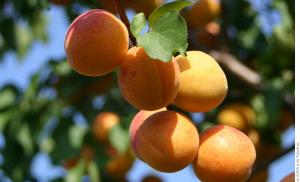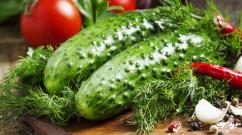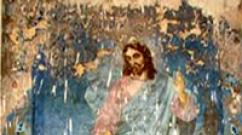Valuable woods. What elite furniture is made of - precious woods The most valuable wood

Before proceeding to the consideration of specific types of wood, valuable and exotic, we will reveal these concepts.
Valuable wood species differ from other, ordinary species by high performance characteristics, such as: texture expressiveness, hardness, shape stability, shrinkage rate, load resistance, oxidation state, and others.
Exotic wood species are commonly referred to as rare and unusual species; exotic wood is often, but not always, distinguished primarily by its unusual appearance for the layman's eye, which can create non-standard aesthetics and give the interior in which it is involved a unique atmosphere. 
Not every valuable breed is exotic, and vice versa, but often these concepts intersect, even more often they are simply equated with each other. Now a few words about the qualities of wood we mentioned above. Among them, durability is not mentioned - one of the most important criteria when choosing wood products.
The fact is that durability is a derivative of many other performance characteristics at once; how long a product made of a particular type of wood will serve you directly depends on how much and quickly the useful wood layer wears out, that is, on hardness, but the ability of wood to keep its shape unchanged also cannot but affect the “life span » products made from this wood; about the ability to transfer moisture, temperature and other loads and is completely clearer than clear - the higher this indicator, the more durable the wood and, as a result, products made from it.
It is important, however, to understand that another, sometimes the most important indicator, on which the durability of furniture and other wooden products depends, has nothing to do with the wood itself - we are talking about care.
Of course, it can be assumed that, for example, oak, which no one takes care of, ceteris paribus, will “stretch” longer than a pine countertop, which a zealous owner protects like the apple of an eye, but this does not mean at all that cleaning, treating wood with protective compositions, updating varnish - unnecessary worries.
There is the same difference between the wear and tear of wood as between the growing up of a person and his aging.
Finally, let's move on to valuable and exotic wood species in the format of a concise "dossier".
In order not to rack our brains over the order in which these breeds should be placed in our review, we decided not to give preference to any particular operational quality or, moreover, to our tastes, and choose the good old alphabetical sorting. So let's go.
Our parade opens with abachi, soft wood of a noble cream or yellowish hue with low thermal conductivity and high moisture resistance, practically without knots, obtained from a huge, up to forty meters high, deciduous tree called Hard Resinous Triplochiton, which grows only in the tropical forests of western Africa, and apart from the rest of the trees, as if realizing its exclusivity.The almost complete absence of knots is due to the fact that in Abash the crown is present only at the very top - accordingly, almost the entire tree consists of a smooth trunk without branches.
Abachi wood has a density of 400 kilograms per cubic meter. Abashi is excellently tinted, easily processed - both manual and machine. From hammering in nails, screwing in screws, Abachi wood does not crack, different parts from Abashi easily and tightly stick together with each other.
For such remarkable performance characteristics, Abashi was nicknamed African oak. By the way, we will soon get to the real oak. 
Abashi has a wide variety of applications. Of course, both in Russia and abroad, abachi is mainly used for arranging steam rooms in baths, but ship and aircraft builders, manufacturers of stringed musical instruments, furniture makers and many other specialists also practice the use of abachi wood in their business.
In the assortment of the "Russian Master" there are many products made from this wood: for baths and saunas, boards and other structural elements of the shelves, corners and other moldings, a lot of bath accessories - from walkways and headrests to lampshades.
The next valuable type of wood - abashi alpine - is obtained from the same deciduous tree, Triplokhin hard-resinous, which only grows in the African highlands, hence, as you might guess, the name.
The wood of the alpine abash is denser, its density is 560 kilograms per cubic meter. The color of the texture is also cream, but closer to grayish, less often yellowish brown, and sometimes - in aquifers - even gray-brown.
Like regular abachi, alpine is most used for steam rooms in particular and bath finishes as such, it is also often used for the manufacture of flooring and sports equipment.
The Russian Master's catalog contains the following products made from high-mountain abashi: a board for shelves, structural elements of shelves for finishing a sauna.
Acajou
The next valuable tree species - aromatic cedar, or acajou (less often - red acajou) - is often called differently, with reference to the country of origin: for example, Spanish cedar, Trinidadian cedar, and so on.In English-speaking countries, this breed is known as "cigar box cedar", while the main trade, nomenclature name in international markets is Central American cedar. It is a soft wood of medium grain with low thermal conductivity and a density of 480 kilograms per cubic meter.
Scented cedar is famous for its special resin, which not only smells good, but also repels insects and other pests. I will say the darker, the older the tree from which it is obtained. 
Easy to work, cajou wood can pose some problems due to the presence of rare rough areas that need additional, finer sanding.
Veneer, furniture, interior trim, plywood, musical instruments (particularly guitars, both classical and Spanish), even small private boats and building cladding - all of which are not made with aromatic cedar alone.
Specifically, in our assortment, akazhu wood is represented by the following product categories: wall paneling for saunas and baths, bath accessories (fences for lamps).
Balau
The next valuable and very rare acquaintance who needs to be introduced is the red balau. Heavy and dense (860 kilograms per cubic meter), very hard wood of red-purple or red-brown hues with a large, uniform structure and high resistance to abrasion.The trees from which red balau is obtained grow only on the island of Borneo. The surfaces of red balau parts are remarkably processed.
Red balau products are distinguished by unusual biostability, which means that unfavorable conditions, which are “too tough” for almost all other types of wood, do not pose a particular danger to furniture or other products made from red balau.
Sleepers, furniture, sports equipment, ship equipment, elements of exterior and interior decoration, terraces, poles, beams - these are the main areas of application of red balau, requiring wear resistance from wood raw materials, coupled with the ability to endure huge loads, that is, the very qualities that red balau has presented in abundance.
In the assortment of the "Russian Master" there are many products from red balau: plankens, stair and ordinary pillars, glued beams, columns, terrace boards and terrace railings, decking and cladding panels.
With the prices of various products, in particular with the price of glued beams, you can find in our store.
bangkirai
Bangkirai is a very hard and very durable wood with a density of 980 kilograms per cubic meter, obtained from a tree called Shoreya Smoothleaf, which grows in Southeast Asia, mainly in Kalimantan.Color - light brown, less often - reddish brown; texture - from medium to small sizes. The sapwood and heartwood of the bangkirai almost do not differ in color and texture.
The main area of application for bangkirai timber is marine construction; all kinds of piles and barriers, sluice gates and fender structures, as well as decking and footbridges, walkway elements and floor coverings for both residential and industrial premises - these are the main types of products produced using Shoreya smooth-leaved wood.
Speaking of industrial premises, it should be clarified that even in chemical industries, bangkirai floors, as they say, “do not let us down”, because their resistance to acids and other “vigorous” compounds is unusually high, for the same reason, tanks, bathtubs are not uncommon in the chemical industry and vats from bangkirai.
Products of the "Russian Master" from bangkirai: decking, decking. A little less rare, but still very, very valuable breed - red bangkirai growing in continental Malaysia, wood with medium hardness, high wear resistance and a density of 800 kilograms per cubic meter.
The structure of bangkirai red is very monochromatic, so the texture is almost invisible. Red bangkirai keeps its shape wonderfully, has a pleasant, camphor-like smell, which, as in the case of red cedar, is also a “scarecrow” for insects and other harmful creatures.
In the manufacture of products from Bangkirai red, it can not be processed at all (nevertheless, the surface quality is at its best), however, experts recommend coating the surface with a special oil to protect the wood fibers from ultraviolet radiation.
Do not be alarmed if minor cracks appear on the surface of red bangkirai products - this is a natural feature of this type of wood.
Flooring in private homes, terraces, windows and doors, plankens and cladding panels are the main areas in which red bangkirai wood is used.
Accordingly, our site presents the following products of the "Russian Master" with the use of red bangkirai: planken and terrace boards, logs and fences for terraces, decking, facing panels.
Bintangor, or capophyllum, is a valuable wood species originally from Malaysia, of medium hardness and wear resistance, with a density of 560 to 770 kilograms per cubic meter, almost without knots.
Easy to saw and just as easy to process; when sawing, the cross section is often fluffed with pile; driving a nail or screwing a screw into a piece of bintangor requires pre-drilling.
The color of the capophyllum sapwood is yellowish-brown to orange, and the heartwood is pinkish, rarely reddish-brown. The texture of the bintangor is large and heterogeneous, the planed surfaces are shiny, there is a striped pattern on the radial cuts, and a zigzag pattern on the tangential cuts. 
Bintangor products are used both indoors and outdoors (without direct contact with the ground).
The main areas of application of bintangor are: small private vessels, masts, spars and other equipment, floor coverings, furniture and cabinetry production. Also, bintangor is considered all over the world to be the best wood for the manufacture of trampoline boards.
golden cedar
About the next valuable tree species that we will consider, unlike oak, you hardly heard of it - this is the golden cedar Otie, which grows in Nigeria, Kenya and Tanzania.A soft, moderately durable wood with low thermal conductivity and a density of 420 kilograms per cubic meter is sourced from semi-tropical rainforests and can range from a deep golden brown to yellowish brown with beautiful dark streaks.
Otie's Golden Cedar wood products develop a light reddish-brown hue over time with exposure to the environment. The core rays make the pattern mottled on radial cuts.
Otie golden cedar grains are generally straight and medium in texture. The main characteristics of this valuable species of wood are high moisture resistance, coupled with low thermal conductivity, which makes Otie golden cedar wood an ideal material for the manufacture of bath decoration elements.
Lining for a bath and sauna, accessories for a bath (fences for lamps) - these are the products with the use of golden cedar Otie, which are presented in the catalog of the Russian Master. The next valuable tree species that we will pay attention to is coniferous.
Canadian cedar
This is red Canadian cedar (more often referred to simply as Canadian cedar, although it grows not only in Canada, but also in the USA), a soft wood with low thermal conductivity, high resistance to abrasion and a density of 360 kilograms per cubic meter.The straight-grain structure of Canadian red cedar wood ensures that unevenness does not form during its processing, and the use of fixing materials does not lead to cracking.
One of the main qualities of Canadian cedar is its ability to keep its shape even with sharp climatic changes, due to the relatively low compression ratio of wood fibers.
The structure of Canadian red cedar wood is porous, as a result of which Canadian cedar has excellent soundproofing characteristics. It is not surprising that connoisseurs of the construction business prefer exactly the products from the red Canadian sneaker for decorating the walls, floors and ceilings of residential premises.
The advantages of the red Canadian cedar are not exhausted by this: due to its low density, in addition to those already listed, it is also an excellent heat-insulating material.
It is not cold in winter, not hot in summer - this is about houses trimmed with red Canadian cedar. Being also not subject to rotting, red cedar is, without exaggeration, one of the most reliable and durable materials; This is confirmed by the fact that most antiques and even some archaeological finds are made from this valuable wood species. 
"Russian Master" brings to your attention products made of red Canadian cedar: a board for shelves and structural elements of shelves for finishing a sauna, lining for a bath and a sauna, fonts (including heated ones), ofuro, infrared cabins, saunas; corners, platbands, skirting boards and other moldings, various bath accessories - lamp railings, footbridges, thermohygrometers, headrests, backrests, and so on.
Kasai
Growing in Southeast Asia, as well as in Australia and Oceania, kasai can rightfully be called both a valuable and rare tree species. Hard, dense (750 kilograms per cubic metre), and hard wearing, kasai wood can be almost any shade of brown imaginable—typically flecked with purplish red.Possessing a moderately pronounced, sometimes wavy structure with light glossy reflections, kasai wood invariably causes enthusiastic sighs even among the most indifferent to luxury people.
Perhaps the only drawback of kasai wood is that sometimes the trees from which it is extracted have twisted trunks and, as a result, an unsuccessful form for processing. However, this makes the kasai even rarer and makes kasai products even more desirable.
Amenable to sawing, kasai wood adheres wonderfully and holds fasteners just as wonderfully; craftsmen should keep in mind that kasai dulls tools when cutting - not as much, of course, as dahoma wood does, but still noticeable.
Construction, decoration, repair - these are the main areas of application of kasai.
Furniture, floor coverings, musical instruments, lining of small private vessels, decking of piers, doors and windows, panels - the list can be long, so we will stop listing and focus on those products from kasai that are presented directly in the Russian Master catalog: these are terrace boards.
Siberian cedar
The next valuable coniferous species on our list is Siberian cedar, or Siberian cedar pine. Soft, but very resistant to abrasion, light wood with a density of 420 kilograms per cubic meter with a yellowish-white sapwood and a yellow-pink heartwood (and there is no clearly distinguishable border between them, due to the smooth transition from the heartwood to the sapwood, a beautiful pattern is created).
Siberian cedars are famous for their longevity: on average, one forty-forty-five-meter Siberian giant lives from five to eight centuries. Contrary to the name, in addition to Siberia, these cedars also grow in Mongolia and the northern regions of China.
This valuable wood species is not only easy to process, but also practically does not dull the cutting edges of tools. Knots and cow pockets can sometimes prevent the surface from approaching perfection even after careful processing.
Paints and varnishes and protective compositions are "assimilated" by Siberian cedar without difficulty. The use of fasteners in relation to parts made of Siberian cedar does not require pre-drilling. The Siberian cedar is not afraid of insects and other pests, it is also not afraid of temperature changes; On top of that, Siberian also has a wonderful and, according to traditional healers, a healthy smell.
Veneer, pencils, art products, pencils - what is not only produced from Siberian cedar wood, but its main areas of application are, perhaps, the production of materials for exterior and interior decoration.
Buckets, buckets, ladles, steamers, pouring devices, clocks, thermometers and thermohygrometers, imitation timber - these and some other products from Siberian cedar are in the assortment of the Russian Master.
Kekatong
From conifers back to deciduous: kekatong. Extraordinarily dense - 1200 kilograms per cubic meter - very hard and wear-resistant kekatong wood has a beautiful texture and a clear dark red pattern.This miracle grows only on the island part of Malaysia. The quality of the surface treatment of the kekatong is such that almost all of the breeds we have listed will “envy”. In order to prevent kekatong products from fading in the sun, it is recommended to treat them with a special protective oil. Flooring, furniture, terraces - whether private or public, kekatong will withstand any wear and tear and any load.
On our website you can get information about the products of the "Russian Master" from kekatong: decking, decking, planken, facing panels. Our list would be incomplete without Siberian larch, another hard and dense (660 kilograms per cubic meter) valuable wood species.
Siberian larch has medium thermal conductivity and high abrasion resistance. The sapwood of the Siberian larch is white and narrow, and the heartwood is reddish-brown.
Annual rings are clearly visible on the cross section. After teak, which we will talk about a little lower, Siberian larch is the second most valuable breed in Europe in terms of severity and hardness. In addition to these qualities, Siberian larch wood is strong, hard, resilient, resinous and, as a result, resistant to various pests.
There are also disadvantages, the main of which are the tendency to cracking and oblique layering. The heartwood of Siberian larch is incredibly resistant to any climatic changes and in terms of durability it is able to compete with oak wood, especially when it comes to underwater use.
Having dried, the product made of Siberian larch becomes stronger than before - so much so that sometimes it is not even possible to simply hammer in a nail. Of course, pre-drilling is indispensable.
Construction and furniture production, railway and shipbuilding, the manufacture of sports equipment, terraces, front gardens and fences, the chemical industry - it is easier to list in which areas Siberian larch is NOT used, it is so reliable and durable.
Stairs, doors and windows, gates and facade coverings, walls, roofs and ceilings, balconies - in fact, if desired, the entire country house can be built from Siberian larch, furnishing heaps of furniture from the same valuable wood species.
Often, wealthy owners who can afford to buy products from tropical and any other exotic woods still prefer furniture and other products from Siberian larch.
The catalog of the "Russian Master" contains a lot of products made from Siberian larch: lining, terrace board from larch, imitation of timber (block house), wooden wallpaper, false beams, moldings, parquet board, tongue and groove, decorative columns, planken, components of stairs - steps, turntables, bowstring; fonts, ofuro; bridges for baths and saunas and other bath accessories.
Dark red meranti is a hardwood native to Africa, Malaysia, Southeast Asia, India, China and Indonesia; solid wood of dark red meranti is characterized by low thermal conductivity, high wear resistance and a density of 700 kilograms per cubic meter. 
Under one common name "meranti" several types of valuable wood species are combined at once. Specifically, dark red meranti is so named because of the corresponding color of the wood; its texture is coarse and uniform. Moisture resistance, lightness and durability - these are the main advantages of dark red meranti; in addition, parts made from this wood are easy to process, glue, paint, polish well and hold fasteners.
Furniture production, construction business - these are the main areas in which dark red meranti wood is used. More often than other products, gazebos, parquet, elements of interior and exterior decoration, doors and windows, as well as ship plating are made from this valuable breed.
The assortment of the "Russian Master" includes such products made using dark red meranti wood, such as facade cladding, planken, terrace boards and decking, cladding panels and boards.
Merbau
Merbau is a very hard and very wear-resistant valuable hardwood with a density of 980 kilograms per cubic meter, growing in Australia and Oceania. The core of the merbau can be brown-orange, brown or red-brown, darkening from weathering.The appearance of merbau products is much more recognizable and popular than the name of this breed; This is facilitated by the peculiar structure, the noble combination of orange and brown and the characteristic patterns on the tangential sections, formed by lighter parenchymal zones.
Of all the valuable and exotic woods we have listed in this review, merbau boasts perhaps the best surface quality, as well as extraordinary dimensional stability. The use of merbau wood outdoors comes with an interesting twist: the first few times it rains, orange-red sap comes out of the wood pores.
The results of these "bleeds" are easily removed with a damp cloth. You should not be afraid that with the release of these juices, the resistance to the negative effects of insects and other pests will fall, it remains at a consistently high level for merbau wood products. Exterior and interior decoration, furniture production, veneer and flooring are the main areas in which merbau is used.
Especially often merbau is involved in the manufacture of constituent elements of terraces. "Russian Master" offers terrace boards and decking, planken, cladding panels and some other products made using merbau wood.
Juniper
Juniper, also known as veres and juniper, is a soft and light coniferous species with good wear resistance and a density of 570 kilograms per cubic meter. Pinkish-white sapwood, yellow-brown or gray-brown heartwood; pleasant smell, simultaneously reminiscent of cedar and cypress.Juniper wood is well cut and pierced. It is generally accepted that the main quality of juniper is its aesthetic appearance, but this does not negate its high performance characteristics, thanks to which juniper is successfully used in medical and perfume industries, carpentry and in the food industry.
The size of the tree from which this valuable breed is extracted is very small, and therefore the juniper has no significant industrial value; it is used for carving, turning, children's toys and canes are made from it; wooden utensils, barrels and other vessels for liquids are often made from juniper, because it is easily processed and does not crack or warp during operation.
"Russian Master" brings to your attention decorative panels and other juniper bath accessories.
The next valuable hardwood species is one of the densest in the world - pau kijang, the average density of this very hard and wear-resistant wood, mined in Malaysia, is 1200 kilograms per cubic meter. Direct arrangement of fibers, large and heterogeneous texture, yellow-brown heartwood sharply separated from the sapwood. The smoothness of the pau kijang surface after processing is medium, the strength is also moderate; what, you ask, is so valuable in this breed? 
Of course, this is the ability of pau kijang products to carry heavy loads, including static ones, thanks to which pau kijang wood is in great demand in bridge building. In addition to building supports, rafters, sleepers, logs and beams are also made from pau kijang, less often furniture, parquet and premium finishing panels.
The assortment of the "Russian Master" includes countertops, window sills, steps and turntables for stairs and shields, all of which are made using valuable pau kijang wood.
Tali
Tali is a hardwood valuable species, moderately hard, very heavy and highly wear resistant and has a density of 910 kilograms per cubic meter. Unfortunately, the trunk of the trees from which this breed is extracted is almost always curved, as a result of which it is rare that more than four commercial logs are obtained from one trunk. Tali grows in Africa, mainly in East.Tali wood is characterized by a sharp sapwood of yellowish or grayish hues, while the color of the heartwood varies depending on the place of growth and can be either yellow or orange-brown with an admixture of red. Over time, the wood from the hoist core becomes darker.
The hoist is characterized by a large texture, tangled fibers and a strong luster of wood. Chamber drying of this valuable tree species should be carried out very slowly and carefully, otherwise the workpieces may be deformed.
Rotting and insects are not terrible for hoist products. With great difficulty, it is subjected to sawing, planing and processing in general, the reason for this is the tangled-grained fiber; here turning the hoist lends itself quite easily. The surface finish of the hoist turns out to be very good, easily accepting varnish and mastics. Tali wood is used primarily for flooring, but in harvesting countries it is often used for building structures, outdoor joinery and carpentry, bridge decks and gates, port facilities and sleepers.
"Russian Master", in turn, offers you a terrace board and decking made of hoist wood.
tiger tree
Tigerwood is a strong and dense hardwood, hard and wear-resistant. It grows in South America, from Mexico to Brazil. The strength of the tiger tree is 930 kilograms per cubic meter; Another common name for the tiger tree is the Brazil nut.The tiger tree has a light sapwood and a brown heartwood with unique dark stripes. Under the influence of light, products made from tiger wood become darker over time.
The structure of this valuable species of wood is uneven, sometimes wavy, sometimes there is an interesting combination of hard and soft wood layers.
Unfortunately, the tiger tree dries for a long time, warps and is prone to cracking, and is difficult to process; but as a result of finishing the surface, a magnificent natural gloss is obtained, which you can admire endlessly.
Negative biological factors - such as insects and rot - are not afraid of a tiger tree. It is difficult to find such a premium yacht that would be made without the use of tiger wood.
Product Catalog
When talking about a valuable tree species, many people understand this concept as oak or elm. Although in fact it is far from the most valuable wood, there are much more expensive ones. We present nine trees, the price tag for furniture from which would amaze even very wealthy people with its scale, but, fortunately, this valuable wood is rarely used for furniture.
Bokote
Looking at this wood, one gets the feeling that it is not real. Amazing natural coloring - one ring is light, one is almost black. This tree, by right of its originality, takes first place in the top of the most expensive types of wood. Its price per cubic meter is $33,000.
sandalwood
There are few people who have not heard about sandalwood - the most famous tree. Oil is also extracted from sandalwood. Its peculiarity is that it retains its aroma for a long time and crafts made from such wood can serve as a room fragrance for many years. The price per cube is $20,000.
Bubinga
A very original tree, it also grows in very original places - only in flooded areas. Popular with gunsmiths as a stock material for guns. The price is 19,000 dollars per cubic meter.
dalbergia
This tree also belongs to the color, and although it does not have such sharp color transitions as the Purple Heart, it looks very noble. It grows in South America and costs $16,000 per cubic meter.
Amaranth
Amaranth, or in other words the Purple Heart, is an amazing, unique tree, its lilac color can be safely called a real miracle of nature. Its cost today is $12,000 per cubic meter.
Grenadil
In the next place is the black African tree - grenadil. The price per cubic meter is $10,000. Very expensive, very valuable and, unfortunately, is on the verge of extinction. Because of its qualities, it was used to make musical instruments.
agar
The price per cubic meter is the same as grenadil - $10,000 per cubic meter. In addition to the original black-core wood, aromatic oil has been made from this tree for 3,000 years.
Ebony
Many have heard the phrase "ebony figurine" about girls with a slender, chiseled figure. A feature of this tree is its unique density, it practically does not absorb moisture and is quite difficult to process. For these properties, musicians love it, an ebony instrument will not swell and will not lose sound at the most unexpected moment. The price per cubic meter is $10,000.
Umnini
Other names for this rare tree are pink ivory or red cat. It grows widely on the African continent in a number of countries, mainly used for making billiard cues, knife handles and national ornaments. The price is 8,000 dollars per cubic meter.
The company "Green Forest" does not produce furniture from the array of these trees, but at comfortable prices you can order furniture from solid oak and pine from us. Such furniture will last for many years, and will always look elegant.
A simple fisherman Min Kwok from Hong Kong supported his family by fishing and selling his catch in the markets. And nothing foreshadowed that a miracle could happen in his life!
Once the catch nearly put him into a trance, because instead of a fish he pulled a piece of wood out of the nets. But his sadness was short-lived - he saw that a yellow liquid, similar to oil, was coming out of the log. Ming Kwok realized that a Golden Fish got into his net, because it was a huge piece of the Eagle Tree, which is priceless for medicine and perfumery, as it is a source for the manufacture of aromatic substances.
Rybak quickly sold the log for $138 million and became very rich. Now he fishes only for his own pleasure from his own boat, which leaves every day from his own pier, which is built near his own third villa on the ocean.
And now I will tell you what this very Eagle tree is ...
Yes, this is Agarwood (other names are aloe tree, paradise tree, eagle tree, agar, agar, oud, oud, kalambak), Aquilaria (Aquilária), grows in the tropical forests of Southeast Asia, the most valuable tree, heads the family of everything 16 trees found in the world. Most of these trees have disappeared because they were destroyed to obtain essential oils. The average life expectancy of aquilaria is 70-100 years, it grows in humid tropical regions with an abundance of rain.
This is a large evergreen tree from which aromatic material has been extracted for many centuries. The dark, viscous core of the tree is used. At the beginning of a tree's life, the heartwood is light and light, but the climate and special microorganisms transform it into a unique natural aromatic substance.
Agarwood is obtained from special plantations in the jungle. The resulting wood, after drying, can be immediately used for fumigating rooms, as incense, or as a raw material for obtaining agar oil.
Aquilaria and, accordingly, agar oil is produced and grown only in Southeast Asia and imported to Arab countries by wholesalers and perfume companies. Agar oil is the result of the complex defense mechanism of the aloe tree. After a tree is infected with a fungus, it begins to produce resin, which “ripens” soaks the trunk and forms such valuable wood. This process takes from several decades to hundreds of years.
The oil is valued in perfumery, as it is a strong fixative, in small doses it is included in the formulations of exquisite oriental perfumes. The aroma of the scarlet tree takes about 12 hours to open, on the skin the aroma can last more than a day. It is especially valued in the perfumery of Arab sheikhs and sultans. The aroma is strong, sweet-woody, almost balsamic, similar to the smell of styrax, vetiver, sweetness reminiscent of sandalwood.
The aroma of agar wood oil (Oud tree), belongs to the group of aphrodisiacs and has a very high cost (more expensive than gold). Obtaining this oil is an ancient process that has been kept secret for thousands of years. Oriental fragrances with oud tree oil are an old recipe known to a small circle of insiders.
Based on this aphrodisiac, expensive drugs are made for the treatment of sexual impotence.
The botanical name Aloexylon Agallochum comes from the Greek aloe and xylon, one might assume the name - "a tree that tastes of aloe". Obviously, when the eagle tree came to Europe, its bitter-astringent taste was the determining factor. In the Bible it is mentioned in Numbers XXIV, 6; in Song of Songs IV,14 under the name "Stacti"; is. Sirach XXIV; Psalt. XLIV,9. In the book of Exodus, the Lord showed Moses a tree, which he threw into the bitter waters of Marah, from which they became sweet. (Exodus 15.25)
The reliability of this legend from the Bible is confirmed by the fact that the Arabs corrected the taste of water with a piece of scarlet tree. This was especially important for travelers. Avicenna wrote that merchants and travelers do not suffer from anything like a change in water, to correct its taste, you need to put a little clay taken near your house and a piece of scarlet tree into it.
In the fifties, they tried to grow aloe north of Nepal in India, the tree grew well, but the desired product did not form in it, then the necessary insects living on this tree were brought in, but the insects, unfortunately, did not get along in the new climate. So scarlet trees stand, but there are no precious fragrant pieces in their wood.
In fact, agar oil is the result of a tree disease. It is formed as a protective reaction to a fungal or bacterial infection. Attacked trees begin to secrete a protective resin that accumulates in the affected areas (roots, branches, parts of the trunk). Gradually, the resin literally impregnates the wood, becoming harder and harder and acquiring a dark brown, sometimes almost black color. At the same time, the core of Aquilaria (the central part of the tree, darker and older than the sapwood) is the most vulnerable to infection. It is for this reason that it is often necessary to destroy the entire tree in order to obtain oil, although it would be more profitable to cut only the infected parts of it.
Agarwood is exported in various forms (wood chips, powder, oil, as well as finished products such as perfumes, aromatics and medicines). The main importers of oud are the countries of the Middle and Far East, in particular the United Arab Emirates and Saudi Arabia (where agarwood is known as oudh), as well as Hong Kong, Taiwan and Japan.
Acquisition Methods
There are three methods for producing oud oil, namely hydro-distillation, steam distillation and supercritical CO2 extraction. The first two are the most common. An important factor affecting the final product (oil) is the age of the tree. Older trees have, firstly, a higher resin content, and secondly, like wine, their resin improves with age. Speaking about the classification of Agarwood oil, it must also be said that the highest quality is obtained during the first distillation. After each subsequent distillation of wood, the quality of the oil decreases.
Oil obtained by hydro-distillation is valued higher than that obtained by steam distillation. According to experts, the latter lacks the voluminous smoky nuances that come with hydro-distillation. In both methods, the resulting oil is filtered, exposed to the sun and aged for some time. The longer the extract of the oil, the better its flavor will be.
When are synthetic substitutes needed?
The need to develop synthetic substitutes (analogues) usually arises when regular supplies of natural raw materials in the required quantities are not available and/or expensive. For the situation with oud, this is very important. And because the perfume industry is already actively using its chemical counterparts. Due to their cheapness, they have occupied a significant in terms of volume, although the least profitable segment of the market. It is worth noting that these analogues actually did not even come close to the imitated natural product. The main chemical components responsible for the characteristic aroma of oud, sesquiterpenes, can in principle be synthesized. However, it is very difficult and expensive to synthesize them, which makes the process completely unattractive commercially.
Thus, the aroma of natural oud oil is very easy to distinguish from its synthetic counterparts. Real oud smells magical - full of smoky, woody and balsamic shades, a warm aura with sweet and sour nuances. Synthetic oud smells simply - it is a woody-leather scent that lacks volume and play of shades.
Why is oud so expensive?
The low yield of oil from vegetable raw materials, the complexity of the extraction process and the lack of natural sources are the main reasons for the high cost of oud. The wood used to make the oil has a low resin content, and it generally takes a minimum of 20 kg of wood to make 12 ml of oil. According to Nabeel Adam Ali, Director of Swiss Arabian Perfumes, the highest quality oud is obtained by processing trees older than 100 years. This, of course, does not mean that young trees do not give a good aroma, but this is not quite the same level of quality, heritage and tradition. However, sales of oud-based perfumes continue to grow every year, and in order to meet demand, many perfumers have begun to use a mixture of natural and synthetic oud in their compositions. (New York Times)
Abdulla Ajmal, director of Ajmal Perfumes, estimated that around 20 years ago a kilo of high-quality "E-class" oud cost about $225.
Now the same amount of raw material will cost about $ 1,500. This is a staggering increase in prices. For those willing to spend more, the highest quality oud is available at $24,950 per kilo. But Mr. Ajmal says profit margins are slim at that price. (New York Times)
Now the average price per kg on the market is about 18,000 euros. This raw material is mainly used in natural perfumery to increase the persistence and intensity of perfumes.
Another reason for the high cost of agar is that Aquilaria is now endangered. The most important species of Aquilaria for fishing are A. agollocha, A. malaccensis and A. crassna. A. malaccensis protected worldwide by CITES (Convention on International Trade in Species of Wild Fauna and Flora) and IUCN (World Conservation Union). A. crassna was listed as an endangered and protected species several years ago by the Vietnamese government.
Use of oud
An important use of oud is in the production of incense. Agar is considered an aphrodisiac, both in the form of oil and incense. Oud oil is often sold in Vietnamese pharmacies. Chinese medicine uses Aquilaria powder to treat liver cirrhosis, lung and stomach diseases.
And amazing. Look at and how it looks
This is a copy of the article located atThere are many different types of trees in the world. Throughout existence, people have used wood according to their needs. But, as you know, you have to pay for everything. This also applies to trees.

Grenadil (African ebony). The cost of 1 kilogram is $10,000
This tree has the most expensive wood in the world. The wood of Grenadil is often used to make musical instruments. By the way, these trees are an endangered species, so it becomes almost impossible to meet them on the ground.

Agar. The cost of 1 kilogram is $10,000
Agar refers to the kind of trees that have a dark core. The first Agar trees appeared about 3,000 years ago, in addition, oil is made from it, which has an amazing aroma. Due to the increasing demand for its wood, Agar has become a valuable commodity.

Ebony - $10,000 per kilo
Diospyros wood or ebony is quite thick and does not absorb water well. In addition, it is known for its use in the construction of pianos, cellos, fretboards, violins, bows, harpsichords and other musical instruments.

Sandalwood - $20,000 per kilo
Sandalwood is known as an aromatic wood that is one of the most expensive in the world. This unique tree produces several natural oils that belong to the sandalwood family. Sandalwood is also unique in that it is able to retain fragrance for many years.

Pink Ivory or Umnini - $7,000-$8,000 per board foot (0.00236 cubic meters)
This type of African tree is also popular under the name Red Cat. Pink ivory grows intensively in Zimbabwe, South Africa and Mozambique. Basically, the Pink Ivory tree itself is used for the production of billiard cues, knife handles and other medicinal purposes.

Backout - $5,000 per board foot (0.00236 cubic meters)
The backout is also known as the tree of life. It belongs to the genus Lignum Kuaiakum, and is mainly grown on the northern coastline of South America.
and in the Caribbean. Wood is one of the most expensive in the world due to its strength, hardness and density.

Amaranth (Purple Heart) - $12,000 per board foot (0.00236 cubic meters)
One of the most unique types of colored woods is Amaranth. The tree is one of the most expensive in the world, and grows in 13 different types in the humid and warm regions of South and Central America.

Dalbergia - $14,000-$16,000 per board foot (0.00236 cubic meters)
This type of wood belongs to the Albertina family, which grow to small to medium sized trees. This type of tree grows in warm regions of South and Central America.

Bubinga - $19,000 per board foot (0.00236 cubic meters)
Bubinga is one of the most expensive woods in the world. The tree itself is a flowering plant belonging to the Fabacheae Bubinga family. In addition to being one of the most expensive woods, it is also the most valuable wood. It grows in flooded forests and marshy places.

Bokota - $33,000 per board foot (0.00236 cubic meters)
The most expensive wood on our list is Bokota, which is very related to Cordia. Due to the huge demand for this wood, it has become the most expensive wood that can be bought on our planet. This tree is native to only a few areas in the Caribbean, Mexico and Central America.

Agar tree (other names are aloe tree, paradise tree, eagle tree, agar, agar, oud, oud, kalambak), Aquilaria (Aquilária), grows in the tropical forests of Southeast Asia, the most valuable tree, heads a family of only 16 trees, discovered in the world. Most of these trees have disappeared because they were destroyed to obtain essential oils. The average life expectancy of aquilaria is 70-100 years, it grows in humid tropical regions with an abundance of rain.
This is a large evergreen tree from which aromatic material has been extracted for many centuries. The dark, viscous core of the tree is used. At the beginning of a tree's life, the heartwood is light and light, but the climate and special microorganisms transform it into a unique natural aromatic substance.
After a tree is infected with a fungus, it begins to produce resin, which “ripens” soaks the trunk and forms such valuable wood. This process takes from several decades to hundreds of years.
The oil is valued in perfumery, as it is a strong fixative, in small doses it is included in the formulations of exquisite oriental perfumes. The aroma of the scarlet tree takes about 12 hours to open, on the skin the aroma can last more than a day. It is especially valued in the perfumery of Arab sheikhs and sultans. The aroma is strong, sweet-woody, almost balsamic, similar to the smell of styrax, vetiver, sweetness reminiscent of sandalwood.
The aroma of agar wood oil (Oud tree), belongs to the group of aphrodisiacs and has a very high cost (more expensive than gold). Obtaining this oil is an ancient process that has been kept secret for thousands of years. Oriental fragrances with oud tree oil is an old recipe known to a small circle of insiders.
Based on this aphrodisiac, expensive drugs are made for the treatment of sexual impotence.
The low yield of oil from vegetable raw materials, the complexity of the extraction process and the lack of natural sources are the main reasons for the high cost of oud. The wood used to make the oil has a low resin content, and it usually takes a minimum of 20 kg of wood to make 12 ml of oil. According to Nabeel Adam Ali, director of Swiss Arabian Perfumes, the highest quality oud comes from wood that is over 100 years old. . This, of course, does not mean that young trees do not give a good aroma, but this is not quite the same level of quality, heritage and tradition. However, sales of oud-based perfumes continue to grow every year, and in order to meet demand, many perfumers have begun to use a mixture of natural and synthetic oud in their compositions. (New York Times)
Oud of the highest quality - $ 24,950 per kilogram. But Mr. Ajmal (Director of Ajmal Perfumes) says that at this price, profits are small. (New York Times)
Now the average price per kg on the market is about 18,000 euros.













